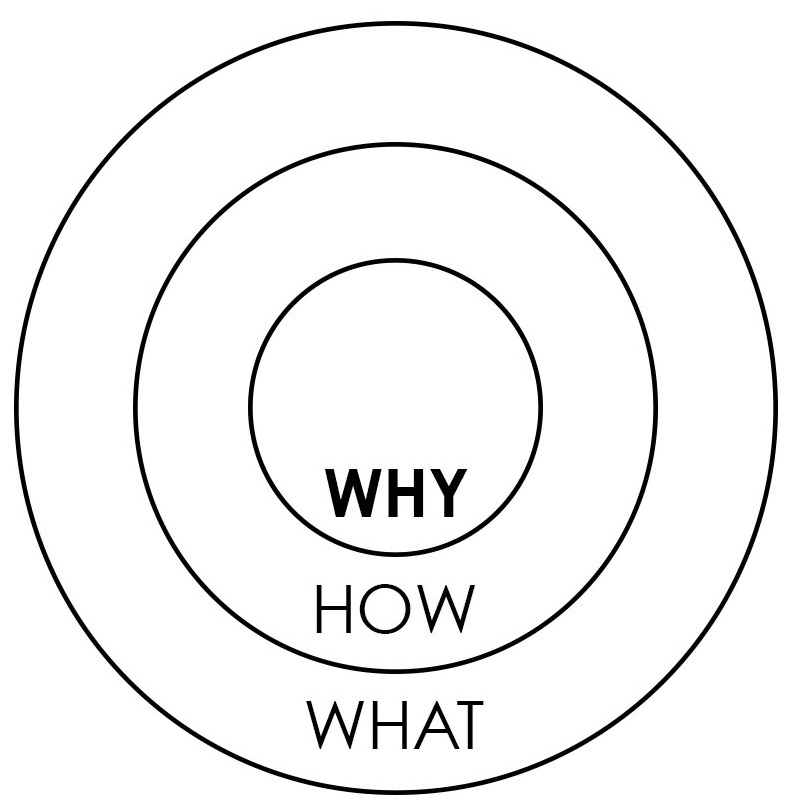Alignment of your “why,” “what,” and “how” is vital in creating loyal followers. Simon Sinek describes this in his Golden Circle concept.

- WHY – Why does your organization exist? This portion of the circle is permanent.
- HOW – How should we fulfill our “why?” This reveals different and better methods of achieving the “why.” This portion of the circle is written in ink; it will take effort to change but can be altered if necessary.
- WHAT – What is the best way to achieve our mission? Our “what” is written in pencil. It can be changed whenever necessary.
Sinek claims that every organization needs to be driven from the inside out. To put things differently, the “why” is your mission, the “how” is your vision, and the “what” is your programming. Within proper alignment, your mission should drive your vision and your vision should drive your programming. When these elements get mixed up, there is misalignment and that’s when problems arise.
ALIGNMENT WITHIN THE TEAM
When hiring, we tend to look at potential candidates based on their “what’s” first. We then analyze how they do things and judge them further. However, we rarely look at their “why.” I think we need to hire within the same alignment that Sinek presents. Start with the candidates “why.” Does it align with yours? Then evaluate the following two levels of the circle.
Also, having a clear “why” eliminates the tendency towards a pecking order. When we lead with our methods as opposed to our “why,” people tend to choose their favourite “whats” or “hows,” which results in unhealthy competition. When the mission is central, everyone’s methods are naturally slotted into the bigger picture bringing clarity to each role and increasing healthy collaboration.
Furthermore, an organization led by its methods instead of its mission often breeds a culture of fear and control, ultimately eroding trust. Trust is not automatic within an organization that starts with “why,” but it is a lot easier to build trust when your “why” is clear. There is more focus, teamwork, collaboration, and honesty because we are all driven by the same thing.
ALIGNMENT WITHIN SUNDAY SERVICES
When we first discovered our “why” as a church, everything we did came under a microscope. We evaluated every element, even the most traditional methods that the church has used forever and ever. Would this method help us to achieve our “why?” If not, why should we continue doing it?
We made some radical changes and along with those came many comments from traditionalists. When we explained our mission, many changed their opinions while others couldn’t get past their personal preferences, which was disappointing. We had to move on anyway because we had a bigger mission and vision; to reach the community and make disciples.
OUR “WHY” AND OUR CULTURE CODES
I firmly believe that culture trumps vision, mission and strategy. Culture is a driving force that will either accentuate your mission and vision or fight them.
When we discovered our “why,” we soon found a force that seemed to be opposing our new focus and that force was culture. To combat this, we set out to design a culture that would be conducive to our “why.”
Culture happens by default or design. We chose to design a culture that would work for us, hence the culture codes. As a team, we sat down and discussed the culture, behaviours, attitudes, environments, etc., that we wanted to implement in order to move our mission forward.
COMPELLED TO DRIFT
It’s really easy to drift back towards tradition. Traditions are built on methods and methods are just the “whats.” It’s what we see regularly and when you continue in them long enough, your methods become traditions. Because they are visible, changing them is also visible, which comes with feedback.
I have changed some methods and have dealt with the critics. I try to invite them to see and understand the why. If that doesn’t work, we will have to agree to disagree and part ways. Often times though, when the “why” becomes clear, a critic can become your greatest ally. Our job as leaders is to constantly make the “why” visible to our followers, which helps combat the temptation to drift.
THE EARLY CHURCH’S “WHY”
The “why” of the early Church was kept clear by an amazing group of leaders. In Acts 15, the church leaders gathered to debate some methods that were being used. In the end, James defined the “why” clearly when he said, “It is my judgement, therefore, that we should not make it difficult for the Gentiles who are turning to God.” (Acts 15:19)
Our true “why” is to bring people – all people – to God. Let’s not get so distracted by the methods that we miss the why. James made a great example of this and we as leaders need to do the same today. So much is at stake because the church is the hope of the world and we’ve been given a mission to reach every available person, at every available time, by every available means, with the Gospel of Jesus Christ by creating churches unchurched people love to attend.
